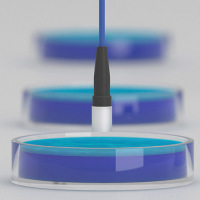
Non-contact height measurement of culture media in Petri dishes
In microbiology, cell cultures are used for the analysis of so-called agar plates. When producing this culture medium, liquid agar-agar is filled into plastic Petri dishes, where it hardens and forms a gel-like, transparent layer. Capacitive displacement sensors from Micro-Epsilon inspect the height of the conductive culture medium with high accuracy. |
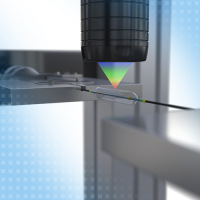
One-sided thickness measurement of tubes
In the manufacture and quality assurance of medical products, the thickness of tubes and membranes as well as the wall thickness of balloons are measured. Confocal chromatic sensors are used which measure the thickness or layers of transparent materials from only one side. |
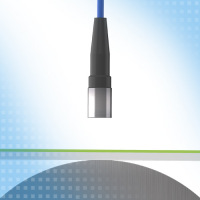
Non-contact thickness measurement of gelatin layers
Gelatin is often used in the shell of soft capsules. For the 100% thickness measurement of the conductive gelatin layer, capacitive displacement sensors from Micro-Epsilon are used, which provide non-contact and precise thickness values. |
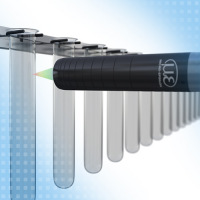
Bottom thickness measurement of container glass
With the wall thickness and roundness measurements in star wheel inspection machines, a fast measuring rate is required in order to support the ongoing process. Micro-Epsilon’s confocal chromatic measuring systems provide a high measuring rate and fast exposure time control. This also enables the measurement of thickness when the glass colors vary. |
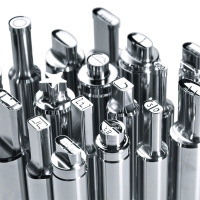
Quality control of medical tablet stamps and dies
According to ISO 18084:2011, the press tools for the tablet production are subject to a continuous quality control. Due to complex geometry and a strongly reflecting surface, automatic inspection of stamps and dies has been difficult. Only the use of a confocal sensor (confocalDT 2451) and an optical micrometer (optoCONTROL 2600) together with a precise movement with 5 degrees of freedom enabled the development of »Ti-1«. Ti-1 is a complex measurement system equipped with a USB interface and special software for the geometric and visual inspection of tools. |
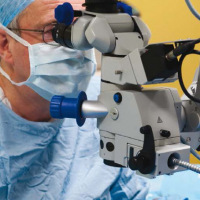
Precise positioning of a surgical microscope
Surgical procedures require a perfect view of the operating area. Here, the surgeon is often supported by a surgical microscope. To enable the surgeon to best position the microscope and to give the surgical team more room to move, the microscope optics are mounted to long arms on a stand. |
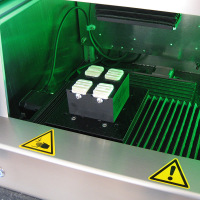
Measuring dental samples confocal
Confocal chromatic sensors are used to check the surface topography of dental samples. These sensors are distinguished by their high resolution and independence from the type of material surface involved. The desired area on the object being measured is marked by software. The system is used on surfaces such as plastic, paper, nonwoven fabric, glass or metal. |
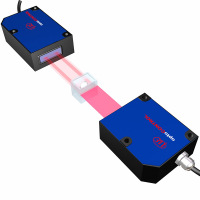
Measurement of contact lenses
Contact lens manufacturers have a need to conduct various material tests on clear, flexible polymer samples. The material samples must be submerged during testing in a saline solution for hydration. The highly sophisticated ThruBeam model ODC2600-40 is uniquely capable of making dimensional measurements with high accuracy and speed. |
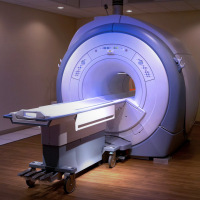
Position measurement in Computer Tomography (CT)
In the latest CT equipment, the most effective diagnoses are determined by how precise and fast the measurement systems are (speed and resolution), as well as their cost effectiveness. Irrespective of whether spiral, helical or dual source apparatus is used, the requirements are continuing to increase. In particular, this also concerns the length measurement equipment for the horizontal reclined position. In this application, draw-wire sensors from Micro-Epsilon achieve a resolution of up to 0.001% of the measuring range; this is combined with maximum reliability, long service life and a very favorable price/performance ratio. |
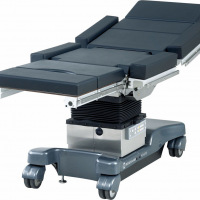
Positioning of operating tables
Operating tables provide many adjustment options for the correct positioning of the patient during the operation. As well as the height, the horizontal position and angle functions can also often be adjusted. As the positioning is performed electrically, the positions must be monitored. Draw-wire sensors from Micro-Epsilon are used for this. |
